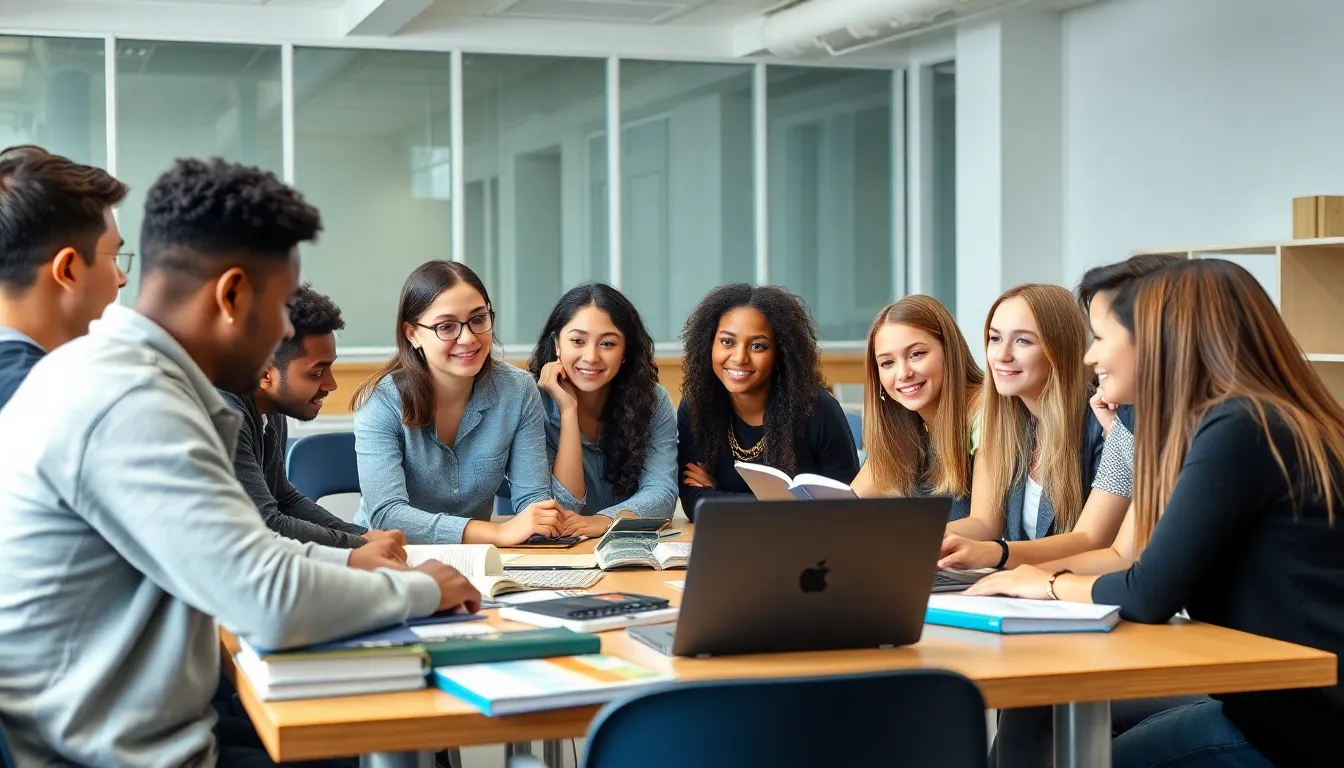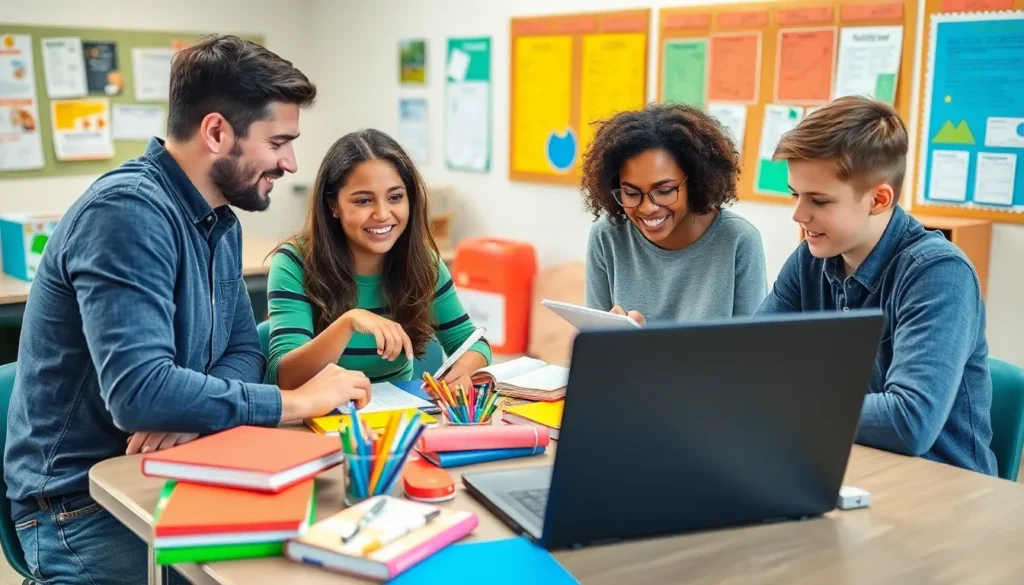Table of Contents
ToggleIn today’s fast-paced world, mastering effective learning methods is more crucial than ever. With information at our fingertips and distractions around every corner, finding ways to absorb knowledge efficiently can make all the difference. Whether in a classroom, workplace, or self-study environment, understanding how to learn effectively can enhance retention and boost performance.
From active engagement techniques to tailored study strategies, the right approach can transform the learning experience. It’s not just about what one learns but how they learn that truly matters. By exploring various effective learning methods, individuals can unlock their full potential and cultivate a lifelong love for learning.
Overview Of Effective Learning Methods
Effective learning methods incorporate a variety of strategies aimed at improving knowledge retention and mastery. These methods include active learning, spaced repetition, and the use of multiple modalities.
Active Learning
Active learning engages learners through participation rather than passive absorption of information. Techniques include:
- Group discussions: Facilitate collaborative understanding and critical thinking.
- Problem-solving sessions: Enhance analytical skills and apply theoretical knowledge.
- Hands-on activities: Foster a practical approach, reinforcing concepts through real-world application.
Spaced Repetition
Spaced repetition employs time intervals between review sessions to optimize memory retention. Key aspects include:
- Review schedules: Implement consistent review timelines to reinforce learning.
- Incremental difficulty: Gradually increase the complexity of material to accommodate growth.
- Feedback loops: Integrate assessments to identify knowledge gaps and adapt study habits.
Multimodal Learning
Multimodal learning combines various formats to cater to different learning styles. It includes:
- Visual aids: Use diagrams and charts to simplify complex information.
- Auditory resources: Incorporate podcasts and lectures for auditory learners.
- Kinesthetic tasks: Engage in activities that require movement to retain concepts effectively.
Personalized Learning Strategies
Tailoring learning experiences enhances engagement and effectiveness. Essential elements include:
- Learning styles assessment: Identify individual preferences to inform study methods.
- Goal setting: Establish specific, measurable objectives to stay focused and motivated.
- Self-regulation: Encourage self-directed learning through reflection and adaptation.
By implementing these effective learning methods, individuals can optimize their educational experience, ensuring a deeper understanding of material and increased retention.
Active Learning Techniques


Active learning techniques facilitate engagement and promote deeper understanding of the material. These approaches involve learners actively participating in the educational process, enhancing information retention and fostering critical thinking.
Collaborative Learning
Collaborative learning emphasizes teamwork, where individuals work together to solve problems or complete tasks. Group activities, discussions, and peer teaching enhance communication skills and build relationships. This method allows learners to share diverse perspectives and approaches, leading to richer learning experiences. Successful collaborative learning includes well-defined roles, structured activities, and effective feedback mechanisms.
Problem-Based Learning
Problem-based learning focuses on addressing real-world issues through investigation and solution development. Learners engage in critical analysis, research, and decision-making, which fosters higher-order thinking skills. This method encourages self-directed learning, as individuals seek resources and information independently. Effective problem-based learning includes clear problem statements, opportunities for reflection, and collaborative solutions, ensuring relevance and application of knowledge.
Visual Learning Strategies
Visual learning strategies enhance understanding and retention of information by utilizing visual elements. These strategies cater to learners who process information best through visual cues, offering effective ways to engage with content.
Use Of Infographics
Infographics present complex information in a visually appealing format, combining graphics, charts, and text. They simplify data, making it easier for learners to grasp key concepts quickly. Research shows that people process visuals 60,000 times faster than text, highlighting the efficiency of infographics in learning. For example, infographics can summarize statistics, timelines, or comparisons, allowing learners to visualize relationships and patterns. Creating infographics encourages creativity while reinforcing the material, ensuring deeper comprehension.
Mind Mapping
Mind mapping organizes information visually, connecting ideas through a diagrammatic structure. This method allows learners to see relationships between concepts, enhancing memory retention and understanding. Creating a mind map involves writing a central idea in the center and branching out with related topics, using colors and images to stimulate engagement. Studies indicate that mind maps improve recall and facilitate problem-solving by providing a clear overview of interconnected information. This technique serves as an effective tool for brainstorming, planning, and consolidating knowledge during study sessions.
Auditory Learning Approaches
Auditory learning approaches capitalize on listening to enhance comprehension and retention of information. These methods engage learners through sound-based resources, fostering a deep understanding of material.
Podcasts And Audio Books
Podcasts and audiobooks serve as valuable tools for auditory learners. They provide flexible, on-the-go access to information and can cater to various subjects and interests. Educational podcasts often feature expert discussions that delve into complex topics, while audiobooks present literature and non-fiction in an engaging, accessible format. Research shows that learners retain information heard through auditory sources effectively, as they can absorb and process content while multitasking. Many platforms, like Audible and Spotify, offer extensive libraries, allowing users to curate personalized listening experiences.
Group Discussions
Group discussions present an interactive auditory learning method that encourages participation among learners. Engaging in conversation allows individuals to articulate their thoughts and hear diverse perspectives, reinforcing understanding. Structured discussions facilitate deeper exploration of topics and enhance critical thinking. Utilizing techniques like roundtable dialogues, learners can dissect material collectively, where effective communication skills and active listening are essential. Facilitators can guide these discussions to ensure constructive participation, promoting a collaborative learning environment that enhances retention and application of knowledge.
Digital Learning Tools
Digital learning tools enhance educational experiences by incorporating technology into learning environments. This section focuses on e-learning platforms and interactive software that promote effective learning.
E-Learning Platforms
E-learning platforms provide comprehensive resources for learners and educators. These platforms, such as Coursera, Udemy, and Khan Academy, offer a wide array of courses covering various topics. They deliver content through video lectures, quizzes, and discussion forums, facilitating asynchronous and synchronous learning experiences. Research indicates that self-paced learning on these platforms improves learner engagement by allowing individuals to tailor their study schedules to personal preferences. Many platforms also include progress tracking features, enabling users to monitor their achievements over time, thus motivating continued participation and growth.
Interactive Software
Interactive software engages learners actively, promoting retention and comprehension. Tools like Kahoot!, Nearpod, and Quizlet allow for gamified learning experiences, where learners can participate in quizzes and games that reinforce knowledge. Such software encourages collaboration among peers, enhancing teamwork skills as learners interact with one another during activities. Additionally, interactive simulations offer real-life scenarios that deepen understanding through hands-on practice. Studies show that learners exhibit increased information retention with interactive software, as it encourages active participation and immediate feedback, essential components of effective learning.





